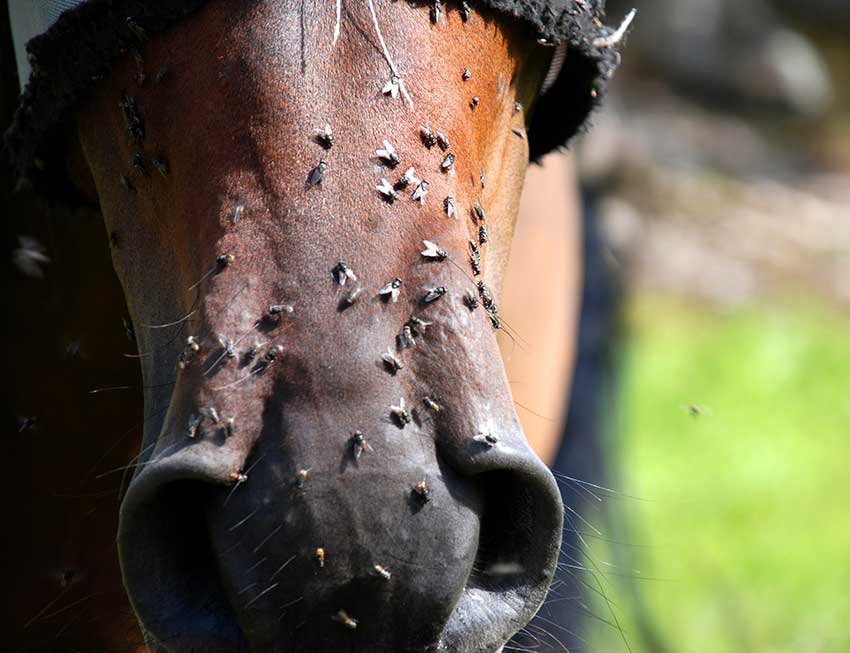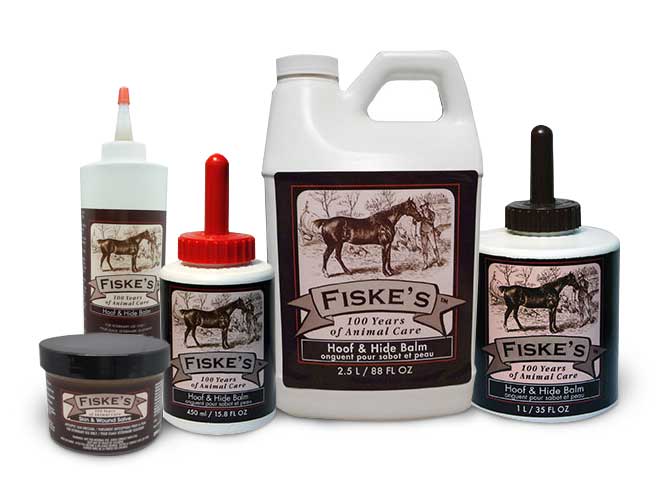
28 Aug 2016 Hot and humid summer days… Great for insects but not so much for your horse… Here is what you can do!
Often during the heat and humidity of summer, insects plague horses. Not all horses deal with them well and sometimes they break out in hives or scratches or even have to deal with sweet itch and hotspots. They can sometimes have severe allergic reactions to the saliva of the biting insects, which can be ‘no-see-ums’, mosquitos, horn flies, black flies or horse flies.
There are a few things we can do to help them out and prevent a summer of aggravation both for horse and owner.
Here are a few steps you can take towards prevention:
- If you can avoid dawn or dusk as turnout time, you can avoid being around the pesky insects when they are the most active.
- When choosing a time is not an option, putting on a fly sheet and/or face mask usually provide another layer of protection. Face masks with ears will prevent the little insects to get in them but can cause horses to sweat more as well.
- A breezy spot or a run in shed can help them get away from insects as well.
- Applying insect repellent on unprotected area’s with ideally non-chemical components, but alternatives such as citronella, peppermint, lavender etc. would be a next step.
When prevention is not enough and your horse comes in from pasture covered in little bumps and bites, we can turn to other solutions to keep them comfortable and prevent excessive scratching and rubbing.
Horses reacting to the insect bites, will usually show hives and/or crusty patches or bumps. They will start scratching the itch and actually make the situation worse, sometimes rubbing the mane and tail to the point where they will damage the hair follicles and cause thickening of the skin.
Secondary bacterial infections can be another result of continuous scratching. Hives are localized edemas or swellings in multiple sites. The swellings result when the capillaries beneath the skin leak a clear fluid from the blood into the tissue spaces below the skin’s surface.
Most cases are allergic in origin, and there are many different causes, such as reactions to drugs, food, to topical drugs or ointments placed on the skin, and seasonal reactions to pollen and molds in the environment. Occasionally hives are secondary to digestive disturbances. Another symptom of hives is itching.
When you have to help remediate the situation, there are two different approaches you can take at the same time. From the inside out, you can help your horse by stimulating his own immune system and to reduce the allergic reactions by giving them Spirulina as a supplement.

Spirulina is a blue-green algae that has a spiral shape and has been around for billions of years. The blue green color comes from the presence of phycocyanin. Phycocyanin is a very strong anti-oxidant which increases the number of white blood cells (which produce anti-bodies) in the bloodstream, thus strengthening the immune system.
Spirulina is very rich in protein (about 70%) but also many minerals and vitamins, such as vitamin A, B-complex, C, D, E, K, iron, potassium, calcium, and magnesium. Many studies have shown a multitude of benefits of supplementing the diet with spirulina, including relieving respiratory allergies, detoxifying of the liver, increasing the stamina, preventing arthrosclerosis, reducing cholesterol levels, regulating blood pressure and improving bowel function.
For horses, 1 to 2 tablespoons per day are sufficient (20 – 40 mg), depending on the severity of the situation or if you are using this as a prevention. I use Certified Organic Spirulina from India. Available in 1 lb bags for $35.
Other than that, you can change the internal acidity of the horse by adding raw (organic) apple cider vinegar to their diet (about ½ cup per day) as well as garlic.
Externally, when dealing with the skin condition itself and to help deter insects, I always recommend people to use “Fiske’s Hoof and Hide Balm”.
Fiske’s is an oil or ointment based on bees wax with added plant extracts such as Eucalyptus, Camphor, Wintergreen, Menthol and Thymol. It has not only insect repellent properties but antibacterial, antifungal, antiseptic and anti inflammatory effects. It creates a film over the area and allows the ingredients to do their job of healing while deterring insects from invading and harming the skin.
Fiske’s, made in Canada is my product of choice and for both products I have personally and through clients experienced very positive results. Fiske’s is available as an oil or ointment and can be used anywhere on the horse.
